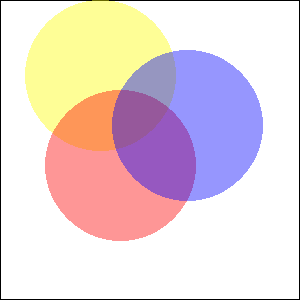imagecolorallocatealpha
(PHP 4 >= 4.3.2, PHP 5)
imagecolorallocatealpha — Allocate a color for an image
Descrizione
$image
, int $red
, int $green
, int $blue
, int $alpha
)
imagecolorallocatealpha() behaves identically to
imagecolorallocate() with the addition of the transparency
parameter alpha.
Elenco dei parametri
-
image -
Una risorsa immagine, restituita da una delle funzioni di creazione immagine, come imagecreatetruecolor().
-
red -
Valore della componente rossa.
-
green -
Valore della componente verde.
-
blue -
Valore della componente blu.
-
alpha -
A value between 0 and 127. 0 indicates completely opaque while 127 indicates completely transparent.
red, green
and blue parameters are integers
between 0 and 255 or hexadecimals between 0x00 and 0xFF.
Valori restituiti
A color identifier or FALSE if the allocation failed.
Questa funzione può
restituire il Booleano FALSE, ma può anche restituire un valore non-Booleano valutato
come FALSE. Fare riferimento alla sezione Booleans per maggiori
informazioni. Usare l'operatore ===
per controllare il valore restituito da questa
funzione.
Log delle modifiche
| Versione | Descrizione |
|---|---|
| 5.1.3 |
Returns FALSE if the allocation failed. Previously
-1 was returned.
|
Esempi
Example #1 Example of using imagecolorallocatealpha()
<?php
$size = 300;
$image=imagecreatetruecolor($size, $size);
// something to get a white background with black border
$back = imagecolorallocate($image, 255, 255, 255);
$border = imagecolorallocate($image, 0, 0, 0);
imagefilledrectangle($image, 0, 0, $size - 1, $size - 1, $back);
imagerectangle($image, 0, 0, $size - 1, $size - 1, $border);
$yellow_x = 100;
$yellow_y = 75;
$red_x = 120;
$red_y = 165;
$blue_x = 187;
$blue_y = 125;
$radius = 150;
// allocate colors with alpha values
$yellow = imagecolorallocatealpha($image, 255, 255, 0, 75);
$red = imagecolorallocatealpha($image, 255, 0, 0, 75);
$blue = imagecolorallocatealpha($image, 0, 0, 255, 75);
// drawing 3 overlapped circle
imagefilledellipse($image, $yellow_x, $yellow_y, $radius, $radius, $yellow);
imagefilledellipse($image, $red_x, $red_y, $radius, $radius, $red);
imagefilledellipse($image, $blue_x, $blue_y, $radius, $radius, $blue);
// don't forget to output a correct header!
header('Content-Type: image/png');
// and finally, output the result
imagepng($image);
imagedestroy($image);
?>
Il precedente esempio visualizzerà qualcosa simile a:

Note
Nota: Questa funzione necessita di GD 2.0.1 o successivi (raccomandato 2.0.28 o successivi).
Vedere anche:
- imagecolorallocate() - Allocate a color for an image
- imagecolordeallocate() - De-allocate a color for an image